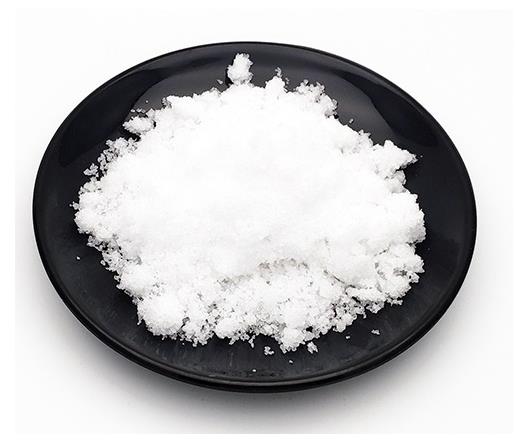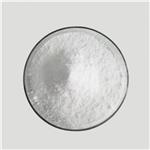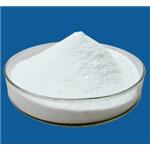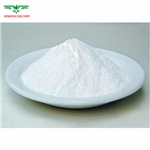Hafnium Tetrachloride: An Essential Compound in Modern Chemistry
Jul 31,2024
Introduction
Hafnium tetrachloride (HfCl4) is an important chemical compound in the field of chemistry, particularly in materials science and catalysis. This compound, consisting of hafnium and chlorine atoms, has gained significant attention due to its unique properties and wide range of applications.

Figure 1 Characteristics of Hafnium tetrachloride
Properties of Hafnium Tetrachloride
Hafnium tetrachloride is a white to pale yellow crystalline solid at room temperature, known for its hygroscopic nature. It has a molecular weight of 320.3 g/mol and a melting point of 432 °C. The compound sublimates at around 315 °C, making it useful in processes that require vapor phase deposition.
The chemical structure of HfCl4 consists of one hafnium atom surrounded by four chlorine atoms, forming a tetrahedral geometry. This configuration results in a highly reactive compound, particularly with moisture, leading to the formation of hydrochloric acid and hafnium oxychloride. The reactivity of HfCl4 necessitates careful handling and specific storage conditions to prevent unwanted reactions.
Main Components
The primary components of hafnium tetrachloride are hafnium (Hf) and chlorine (Cl). Hafnium is a transition metal belonging to group 4 of the periodic table, characterized by its high melting point, corrosion resistance, and ability to absorb neutrons, making it valuable in nuclear applications. Chlorine, on the other hand, is a halogen element known for its high reactivity and electronegativity.
The synthesis of HfCl4 typically involves the reaction of hafnium dioxide (HfO2) with chlorine gas at elevated temperatures. This process yields hafnium tetrachloride and oxygen as a byproduct. The purity of the starting materials and the reaction conditions are crucial factors in obtaining high-purity HfCl4, which is essential for its various applications.
Applications of Hafnium Tetrachloride
Hafnium tetrachloride has a wide range of applications across different fields of chemistry and materials science:
Catalysis: HfCl4 is used as a catalyst in several organic reactions, including polymerization and alkylation processes. Its Lewis acid properties make it effective in promoting reactions that require the activation of electrophilic species.
Semiconductor Industry: In the semiconductor industry, HfCl4 is utilized in the deposition of hafnium oxide (HfO2) thin films through chemical vapor deposition (CVD) and atomic layer deposition (ALD) techniques. Hafnium oxide is valued for its high dielectric constant, making it an ideal material for gate insulators in field-effect transistors.
Nuclear Applications: Due to its ability to absorb neutrons, hafnium is used in control rods for nuclear reactors. HfCl4 serves as a precursor in the production of hafnium metal and its alloys, which are essential components in reactor control systems.
Optics and Coatings: Hafnium tetrachloride is also employed in the production of optical coatings. Hafnium-based coatings are known for their durability and resistance to high temperatures, making them suitable for protective coatings on lenses and mirrors.
Chemical Research: In chemical research, HfCl4 is used as a reagent for synthesizing various hafnium compounds. Its reactivity and ability to form stable complexes with organic ligands make it a valuable tool for exploring new chemical pathways and developing novel materials.
Storage Methods
Given its highly reactive nature, hafnium tetrachloride requires careful storage to maintain its stability and prevent hazardous reactions. Here are some key considerations for storing HfCl4:
Dry Environment: HfCl4 should be stored in a dry environment to prevent its reaction with moisture. Desiccators or dry boxes with an inert gas atmosphere (such as nitrogen or argon) are commonly used to store the compound.
Airtight Containers: The compound should be kept in airtight containers made of materials that do not react with HfCl4, such as glass or certain plastics. Metal containers are generally avoided due to the risk of corrosion.
Cool Temperatures: Storing HfCl4 at cool temperatures helps minimize its sublimation and reactivity. Refrigeration can be an effective method for prolonging the compound's shelf life.
Proper Labeling: Containers holding HfCl4 should be clearly labeled with the compound's name, chemical formula, and hazard information. This ensures safe handling and prevents accidental exposure.
Safety Precautions: Personal protective equipment (PPE), including gloves, goggles, and lab coats, should be worn when handling HfCl4. In case of accidental exposure or spillage, appropriate emergency procedures must be in place to mitigate any risks.
Conclusion
Hafnium tetrachloride is a versatile compound with significant importance in various fields of chemistry and materials science. Its unique properties, such as high reactivity and ability to form stable complexes, make it a valuable tool in catalysis, semiconductor manufacturing, nuclear applications, and more. However, due to its hygroscopic nature and reactivity, proper storage and handling procedures are crucial to ensure safety and maintain the compound's integrity. As research and technology continue to advance, the applications and significance of hafnium tetrachloride are likely to expand, further solidifying its role in modern chemistry.
![]() Reference
Reference
[1] Palko A A, Ryon A D, Kuhn D W. The vapor pressures of zirconium tetrachloride and hafnium tetrachloride[J]. The Journal of Physical Chemistry, 1958, 62(3): 319-322.
[2] Puurunen R L. Analysis of hydroxyl group controlled atomic layer deposition of hafnium dioxide from hafnium tetrachloride and water[J]. Journal of applied physics, 2004, 95(9): 4777-4786.
- Related articles
- Related Qustion
- Hafnium Chloride Electrical grade Jun 16, 2022
Hafnium Chloride is an excellent water soluble crystalline Hafnium source for uses compatible with chlorides. Chloride compounds can conduct electricity when fused or dissolved in water.
Promethazine hydrochloride is a white to faint yellow, crystalline powder. It is practically odorless and has a bitter taste.....
Jul 31,2024APIHigh-purity cobalt hydroxide is an essential compound in the chemical industry, known for its distinct properties and applications.....
Jul 31,2024APIHafnium(IV) chloride
13499-05-3You may like
Hafnium(IV) chloride manufacturers
- HAFNIUM CHLORIDE
-

- $6.00 / 1KG
- 2024-09-06
- CAS:13499-05-3
- Min. Order: 25KG
- Purity: More than 99%
- Supply Ability: 2000KG/Month
- Hafnium(IV) chloride
-

- $0.00 / 1kg
- 2024-08-28
- CAS:13499-05-3
- Min. Order: 1kg
- Purity: 99%
- Supply Ability: 1000000
- HAFMIUM TETRACHLORIDE Electrical grade
-

- $0.00 / 10Kg/Drum
- 2024-08-21
- CAS:13499-05-3
- Min. Order: 10Kg/Drum
- Purity: 99.5%
- Supply Ability: 300tons




